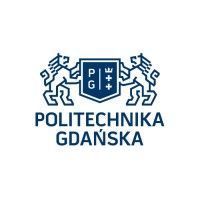预约演示
更新于:2025-08-30
C-1305
更新于:2025-08-30
概要
基本信息
在研机构- |
非在研机构 |
权益机构- |
最高研发阶段无进展药物发现 |
首次获批日期- |
最高研发阶段(中国)- |
特殊审评- |
关联
100 项与 C-1305 相关的临床结果
登录后查看更多信息
100 项与 C-1305 相关的转化医学
登录后查看更多信息
100 项与 C-1305 相关的专利(医药)
登录后查看更多信息
25
项与 C-1305 相关的文献(医药)2022-07-01·Journal of cellular and molecular medicine
Combined anticancer therapy with imidazoacridinone analogue C‐1305 and paclitaxel in human lung and colon cancer xenografts—Modulation of tumour angiogenesis
Article
作者: Moszyńska, Adrianna ; Świtalska, Marta ; Bagiński, Maciej ; Bartoszewski, Rafał ; Gawrońska, Małgorzata ; Dąbrowska, Aleksandra M. ; Milczarek, Magdalena ; Krzymiński, Karol ; Wietrzyk, Joanna ; Filip‐Psurska, Beata ; Psurski, Mateusz
Abstract:
The acridanone derivative 5‐dimethylaminopropylamino‐8‐hydroxytriazoloacridinone (C‐1305) has been described as a potent inhibitor of cancer cell growth. Its mechanism of action in in vitro conditions was attributed, among others, to its ability to bind and stabilize the microtubule network and subsequently exhibit its tumour‐suppressive effects in synergy with paclitaxel (PTX). Therefore, the objective of the present study was to analyse the effects of the combined treatment of C‐1305 and PTX in vivo. In addition, considering the results of previous genomic analyses, particular attention was given to the effects of this treatment on tumour angiogenesis. Treatment with C‐1305 revealed antitumor effect in A549 lung cancer cells, and combined treatment with PTX showed tendency to anticancer activity in HCT116 colon cancer xenografts. It also improved tumour blood perfusion in both tumour models. The plasma level of CCL2 was increased and that of PDGF was decreased after combined treatment with C‐1305 and PTX. The experimental results showed that the levels of FGF1, TGF‐β and Ang‐4 decreased, whereas the levels of ERK1/2 and Akt phosphorylation increased in HCT116 tumour tissue following combined treatment with both drugs. The results of in vitro capillary‐like structure formation assay demonstrated the inhibiting effect of C‐1305 on this process. Although previous in vitro and in vivo studies suggested a positive effect of C‐1305 on cancer cells, combined treatment of HCT116 human colon and A549 lung cancer cells with both PTX and C‐1305 in vivo showed that the antitumor activity was restricted and associated with the modulation of tumour angiogenesis.
2021-12-01·Cellular & molecular biology letters
Triazoloacridone C-1305 impairs XBP1 splicing by acting as a potential IRE1α endoribonuclease inhibitor
Article
作者: Pogorzelska, Aneta ; Collawn, James F ; Bartoszewski, Rafal ; Bagiński, Maciej ; Bartoszewska, Sylwia ; Króliczewski, Jarosław ; Crossman, David K
Abstract:
Inositol requiring enzyme 1 alpha (IRE1α) is one of three signaling sensors in the unfolding protein response (UPR) that alleviates endoplasmic reticulum (ER) stress in cells and functions to promote cell survival. During conditions of irrevocable stress, proapoptotic gene expression is induced to promote cell death. One of the three signaling stressors, IRE1α is an serine/threonine-protein kinase/endoribonuclease (RNase) that promotes nonconventional splicing of XBP1 mRNA that is translated to spliced XBP1 (XBP1s), an active prosurvival transcription factor. Interestingly, elevated IRE1α and XBP1s are both associated with poor cancer survival and drug resistance. In this study, we used next-generation sequencing analyses to demonstrate that triazoloacridone C-1305, a microtubule stabilizing agent that also has topoisomerase II inhibitory activity, dramatically decreases XBP1s mRNA levels and protein production during ER stress conditions, suggesting that C-1305 does this by decreasing IRE1α’s endonuclease activity.
2020-08-01·Journal of pharmaceutical analysis2区 · 医学
Electrochemical and in silico approaches for liver metabolic oxidation of antitumor-active triazoloacridinone C-1305
2区 · 医学
ArticleOA
作者: Potęga, Agnieszka ; Żelaszczyk, Dorota ; Mazerska, Zofia
5-Dimethylaminopropylamino-8-hydroxytriazoloacridinone (C-1305) is a promising antitumor compound developed in our laboratory. A better understanding of its metabolic transformations is still needed to explain the multidirectional mechanism of pharmacological action of triazoloacridinone derivatives at all. Thus, the aim of the current work was to predict oxidative pathways of C-1305 that would reflect its phase I metabolism. The multi-tool analysis of C-1305 metabolism included electrochemical conversion and in silico sites of metabolism predictions in relation to liver microsomal model. In the framework of the first approach, an electrochemical cell was coupled on-line to an electrospray ionization mass spectrometer. The effluent of the electrochemical cell was also injected onto a liquid chromatography column for the separation of different products formed prior to mass spectrometry analysis. In silico studies were performed using MetaSite software. Standard microsomal incubation was employed as a reference procedure. We found that C-1305 underwent electrochemical oxidation primarily on the dialkylaminoalkylamino moiety. An unknown N-dealkylated and hydroxylated C-1305 products have been identified. The electrochemical system was also able to simulate oxygenation reactions. Similar pattern of C-1305 metabolism has been predicted using in silico approach. Both proposed strategies showed high agreement in relation to the generated metabolic products of C-1305. Thus, we conclude that they can be considered as simple alternatives to enzymatic assays, affording time and cost efficiency.
100 项与 C-1305 相关的药物交易
登录后查看更多信息
研发状态
10 条进展最快的记录, 后查看更多信息
登录
| 适应症 | 最高研发状态 | 国家/地区 | 公司 | 日期 |
|---|---|---|---|---|
| 肿瘤 | 药物发现 | 波兰 | - |
登录后查看更多信息
临床结果
临床结果
适应症
分期
评价
查看全部结果
| 研究 | 分期 | 人群特征 | 评价人数 | 分组 | 结果 | 评价 | 发布日期 |
|---|
No Data | |||||||
登录后查看更多信息
转化医学
使用我们的转化医学数据加速您的研究。
登录
或

药物交易
使用我们的药物交易数据加速您的研究。
登录
或

核心专利
使用我们的核心专利数据促进您的研究。
登录
或

临床分析
紧跟全球注册中心的最新临床试验。
登录
或

批准
利用最新的监管批准信息加速您的研究。
登录
或

特殊审评
只需点击几下即可了解关键药物信息。
登录
或

Eureka LS:
全新生物医药AI Agent 覆盖科研全链路,让突破性发现快人一步
立即开始免费试用!
智慧芽新药情报库是智慧芽专为生命科学人士构建的基于AI的创新药情报平台,助您全方位提升您的研发与决策效率。
立即开始数据试用!
智慧芽新药库数据也通过智慧芽数据服务平台,以API或者数据包形式对外开放,助您更加充分利用智慧芽新药情报信息。
生物序列数据库
生物药研发创新
免费使用
化学结构数据库
小分子化药研发创新
免费使用
